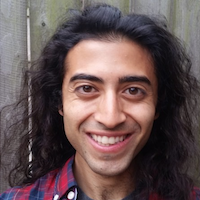

UW Ph.D. Student
Physics
Air Force Research Laboratory (AFRL)
Aero-Optics and Beam Control
Aero-optical beam control relies on the development of low-latency forecasting techniques to quickly predict wavefronts aberrated by the Turbulent Boundary Layer (TBL) around an airborne optical system, and its study applies to a multi-domain need from astronomy to microscopy for high-fidelity laser propagation. We leverage the forecasting capabilities of the Dynamic Mode Decomposition (DMD) -- an equation-free, data-driven method for identifying coherent flow structures and their associated spatiotemporal dynamics -- in order to estimate future state wavefront phase aberrations to feed into an adaptive optic (AO) control loop. We specifically leverage the optimized DMD (opt-DMD) algorithm on a subset of the Airborne Aero-Optics Laboratory Transonic (AAOL-T) experimental dataset, characterizing aberrated wavefront dynamics for 23 beam propagation directions via the spatiotemporal decomposition underlying DMD. Critically, we show that opt-DMD produces an optimally de-biased eigenvalue spectrum with imaginary eigenvalues, allowing for arbitrarily long forecasting to produce a robust future-state prediction, while exact DMD loses structural information due to modal decay rates. This data-driven decomposition of the aero-optics interaction allows for rapid and robust methods for integrating into machine learning control algorithms more broadly. Continuing work is aimed at characterizing data-fusion and optimal sensing for improving latency for control. This work is led by graduate student Shervin Sahba along with Chris Wilcox, Austin McDaniel and Benjamin Schaeffer (Kirkland Air Force Research Laboratories, Albuquerque NM) and J. Nathan Kutz and Steven Brunton.